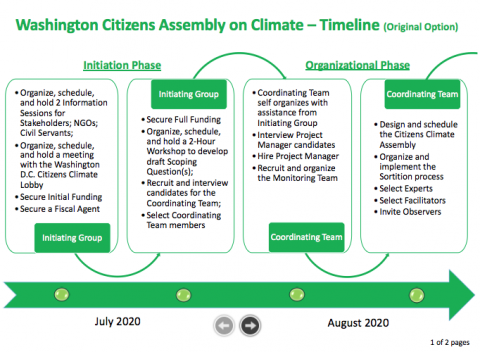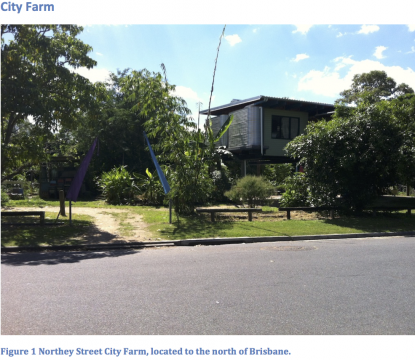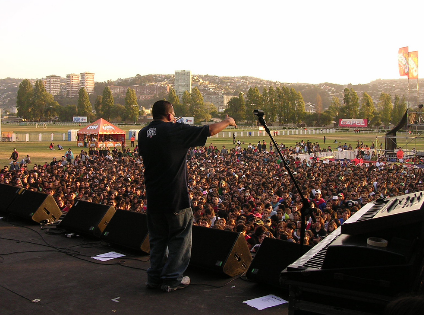Discussion:
Salvage computing has been described in several LIMITS papers in the past and together they provide insight into the applications, obstacles and potentials of this pattern. Barath Raghavan and Justin Ma discussed future scenarios involving resource and energy scarcity and point to reuse of hardware and software in computer networks as a way to avoid the construction of too many new devices with high embodied energy costs. They argue for networking technology to follow the principles of Appropriate Technology, including making devices simple, composed of local materials and easy to repair [26]. As Barath Raghavan and Shaddi Hasan point out in their paper Macroscopically Sustainable Networking: On Internet Quines, a salvage Internet is one way to drastically decrease the Internet’s dependencies, removing the need for manufacturing and transportation, as it uses only common, locally available components. They acknowledge it cannot be sustained in the long-term because it relies on functioning, or at least repairable, hardware [25].
In Towards a World of Fixers, Josh Lepawsky addresses this problem and identifies barriers and enablers to third party repair in the contexts of design, manufacturing, policy, and practice. One of the barriers Lepawsky mentions is planned obsolescense —the design for reduced service life. Ways manufacturers achieve this is through making the replacement, repair or upgrade of components difficult or impossible. An example is for instance the loss of user-detachable batteries, and using adhesives or soldering components to boards instead of using screws and bolts, and if screws and bolts are used, using proprietary ones. Next to that he mentions the use of restricting end-user license agreements and the criminalization of third-party repair. Roura et al. analyse the eReuse project in Barcelona and identify the association of reuse with poverty as an obstacle, as well as bookkeeping practices that devalue devices faster than their actual lifespan, creating the idea of valueless items that will trigger them to purchase new devices instead [24].
Enabling factors he identifies are legislation and regulation requiring manufacturers to make devices repairable, with as a first step advocacy for right-to-repair legislation. Only after these changes in design, manufacturing, and inherently the business models of hardware producers, have materialized, can there be a thriving network of independent, DIY maintenance and repair practitioners [13]. Brian Sutherland mentions the importance of enforcing manufacturers to use universal components, connection standards and interchangeable parts such as USB to ensure current and future compatibility between devices [37]. If repairing is not an option, reusing a device in a different way than its intended purpose, is another path, as pointed out by Remy and Huang. They also mention the enabling of a shift in lifestyle choices, one from wanting to possess the latest gadget to one in which it is desirable to own a device for a long time [27]. Blevis et al. call this New Luxury, where products are considered luxurious because they are of high quality and standard, not because they are expensive [3]. Heirloom computing is a related term, that expresses the desire for long lasting computing hardware that could be passed down from generation to generation [16].
Enabling factors on the software-side are discussed by for instance Devine Lu Linvega, one of the voices of the solarpunk merveilles.town Mastodon instance. They propose that creating software targeting old hardware might be a better approach than a focus on low-power, single-purpose computers, that may have lower energy consumption during their lifetime, but do require manufacturing [15]. Gemini protocol creator Solderpunk thinks along similar lines when writing: "the real long-term future of computing consists of figuring out how to make the best possible use we can out of the literal millions of devices which already exist". He argues that operating systems that still run on older hardware, and the software running on those operating systems, are very valuable things to develop and to maintain. He lists several things developers and users can do as 'good solarpunk praxis', with at the very top not buying any new devices, and instead investing in user-servicable used ones. He advises developers to invest in an (at least) 10 year old device and test their software on it, to push back against software 'progress' deprecating still functioning hardware. He also advises to support projects which develop software running on older or unsupported hardware, and those trying to ‘jailbreak’ locked down devices to make them more general purpose; by donating hardware, writing code, writing documentation or donating money [36].
Enabling factors in the DIY field of repair are skillsharing, documentation of repairs and the sharing of that documentation. In their paper Unplanned Obsolescence: Hardware and Software After Collapse, Jang et al. emphasize the need for social networks and institutions of people interested in computer repair, as they might prove invaluable for sourcing parts and maintaining the skills needed for successful repair culture [11]. There are currently several online communities involved in documenting repairs to consumer electronics, including computers and smartphones; the most prominent example is iFixit, a website with over 80,000 documented repairs (Fig. 3). The website also sells commonly needed materials, tools and spare parts. The Restart Project, a UK based organisation that started in 2013, is organising repair events across the UK and internationally. The project also lobbies for the Right to Repair in the UK and Europe. Lastly, in the Netherlands, many city councils have started repair cafés that welcome citizens to bring their broken devices in for repair in community centers. The Repair Café initiative was started in 2009 by journalist and activist Martine Postma in Amsterdam. Today, there are about 2000 cafés worldwide. Next to these grassroots initiatives, there is also a lively commercial smartphone repair culture consisting of small shops, also extending into hacklabs and fablabs, with an associated ecosystem of sourcing spare parts and skill sharing; unauthorized, sometimes very creative and often illegal interventions [20].
Scholar Jennifer Gabrys describes salvage as a practice of engaging with the discarded "with an eye to transforming what is exhausted and wasted into renewed resources" [8]. She adds the important observation that this process also means engaging with the conditions that led to disrepair; planned obsolescence, the rapid upgrade-or-die cycle of the tech industry and consumer capitalism in general, not to mention the impact of this on the Global South, which is receiving the West’s e-waste and suffers the pollution caused by the production of the Global North’s technology. The Right to Repair campaign engages with one of these conditions: planned obsolescence. The campaign was started in 2019, with as long term goal to remove the barriers to repair products, and in the short term ensure the EU introduces a scoring system on repairability as part of the existing energy label for all energy-consuming products. The campaign gathers 40 organizations from more than 16 European countries. Thanks to the successes of the Right to Repair movement in Europe, repair practices are gaining momentum there.
Out of precarity, and because of the ongoing impact of colonialism, there are very rich and creative repair practices in existence—Jugaad, Gambiarra, Resolver, Shanzhai. Because of the sudden attention in the West to e-waste and supply chains, these practices of improvisation are appropriated and fetishized, yet as Ginger Nolan argues, the romanticizing of the inventiveness of these practices can function as an excuse to keep economic instability and precarity in place [21]. Instead, a focus on reviving historical, local repair practices that have become scarce or have disappeared could be a way to revive not only more sustainable practices using locally sourced material, but also reviving the skills that cannot be transmitted digitally, as well as traditional forms of negotiating value through the process of fixing, also things that cannot be quantified, such as the social role of repairers within a community [18].
Considering today’s urgent need to shrink consumption of resources, it is surprising to see that from the list—reduce, reuse, repair and recycle—the last one is the most wasteful, yet has gotten most attention. This emphasis on recycling can only be explained because the other three point to economic degrowth, an unpopular topic in mainstream politics to date. This shows the importance of a political agenda, next to design and praxis.










